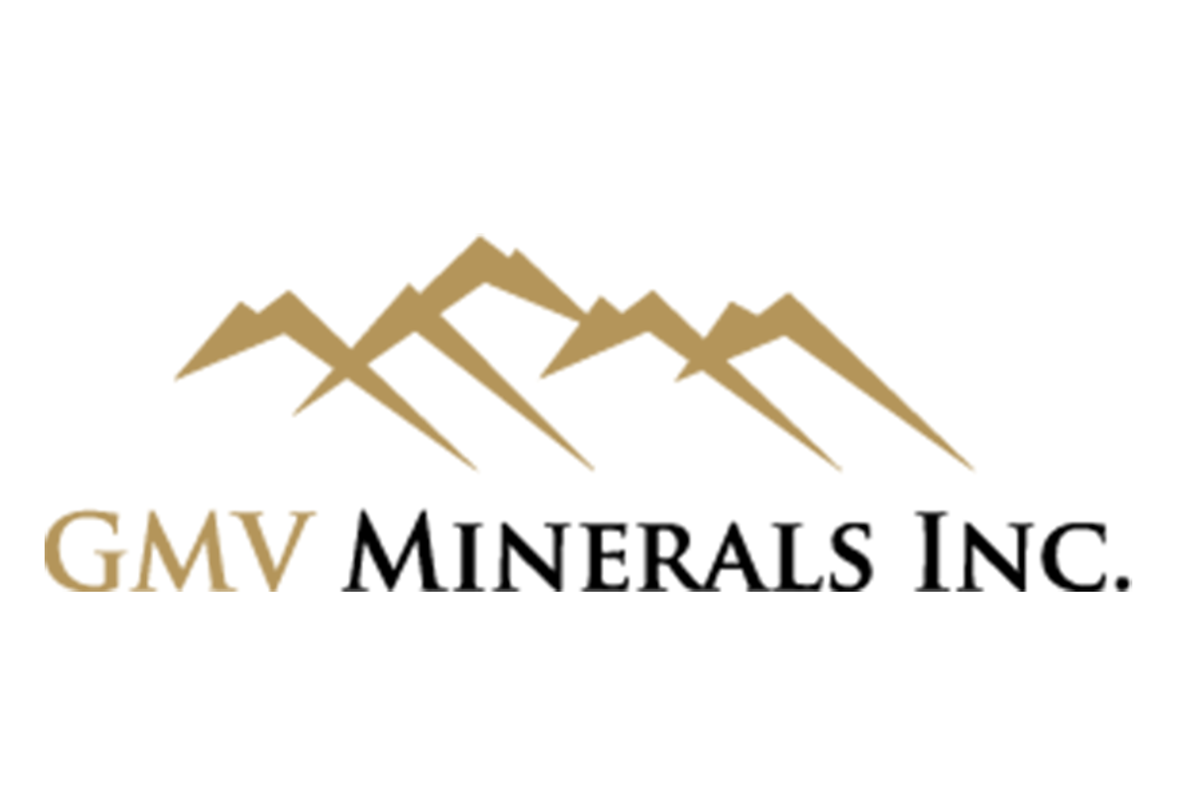Investor Insight
GMV Minerals is an attractive investment proposition with both gold and lithium projects that have compelling market economics, in well-established mining jurisdictions in the USA.
Overview
Junior exploration and development company GMV Minerals (TSXV:GMV,OTCQB:GMVMF) is advancing two major projects in Arizona and Nevada, both positioning the company to take full advantage of a continuing gold bull market and the exponentially rising demand for lithium - a mineral facilitating the global push for decarbonization and energy transition.
The Mexican Hat gold project, located in Arizona, is a high-quality, 5,000-acre gold asset with an inferred resource of 688,000 ounces of gold and compelling positive preliminary economic assessment, including a 10-year mine life, low CAPEX and very strong pre-tax NPV.
In Nevada, GMV has a three-year option agreement to earn a 100 percent interest in the Daisy Creek lithium project located in Lander County. Nevada currently hosts the only producing lithium mine in North America, and is home to Thacker Pass, the largest known lithium deposit in the US. GMV now controls or owns 165 lode claims covering 3,408 acres at Daisy Creek. The claims are close to operating gold mines and have access to existing power lines, water and paved highways.
Company Highlights
- GMV Minerals is a junior gold development company focusing mainly on its gold asset Arizona and recently acquired lithium option in Nevada.
- GMV’s 100 percent owned Mexican Hat gold project in Arizona is notable for its estimated 10-year mine life, low capex and a discounted pre-tax US$153 million NPV using a US$1,600 per oz base case. At US$2,240 per ounce the PEA indicates a discounted pre-tax NPV of US$395 million.
- Mexican Hat hosts an inferred 688,000 ounces of gold, excellent metallurgical results and a low strip ratio.
- In Nevada, GMV has a three-year option agreement to earn a 100 percent interest in the Daisy Creek lithium project located in Lander County.
- Both Daisy Creek and Mexican Hat are situated in safe, mining-friendly jurisdictions with readily available and experienced service providers. Each asset is also situated close to existing infrastructure, further reducing initial capex.
- GMV is also noteworthy for its tightly held share structure, with 24 percent of shares held by management and advisors.
Key Projects
Mexican Hat

A low-sulphidation epithermal gold deposit, GMV’s 100-percent-owned Mexican Hat contains an estimated gold resource of 688,000 ounces across 5,000 acres. As GMV's flagship project, the company aims to further expand this resource through drilling, ultimately moving from an inferred resource estimate to a measured and indicated estimate. The mine development itself will consist of two pits — a smaller southeast pit will be mined first, followed by a larger pit to the north.

Mexican Hat project in Arizona
Highlights:
- Established Infrastructure: Located in close proximity to considerable transportation and power infrastructure, and a skilled workforce.
- Well-established Mining Process: GMV plans to extract minerals from Mexican Hat through heap leaching, a mining process known for its low capital investment and operating costs, fast payback, lack of tailings, low energy and water requirements, and simple setup and operation.
- Area Geology: Primary mineralization consists of gold and oxides in a metasomatic assemblage of chlorite, carbonate, epidote and minor silica arranged along a series of fractures and fault zones within a tilted conformable package of tertiary rock.
- Mineral Resource Estimate: The results of Mexican Hat's 2020 MRE include an inferred resource of 688,000 ounces at 0.58 grams per ton (g/t) gold in 36.73 Mt with a cut-off of .20 g/t gold and a strip ratio of 2.36.
- Preliminary Economic Assessment: Mexican Hat's PEA, conducted with the updated 2020 MRE, indicates a 10-year mine life; $100 million NPV; $67.80 million initial capex; 29.30 percent IRR after tax at $1,600/ounce of gold; and average annual gold production of 52,250 ounces.
Initial drilling at Dasiy Creek was completed in 2024 with preliminary results showing a thickening in the claystone horizons and increasing in the grade towards the south. The southern-most hole, DC24-1 intersected three distinct claystone horizons totaling 48.7 m of lithium enrichment starting 76.2 m downhole. GMV Minerals plans to conduct water sampling, plus an update of hydrologic, cultural, and environmental studies for permitting in 2025 with conversion and geotechnical drilling in the first and second quarters of the year.
Daisy Creek Lithium Project

View across the Basin showing historical trenching from the 1970s; material trenched is a claystone.
Located in Lander County, Nevada, Daisy Creek consists of 165 lode claims. Initially targeted for uranium by multiple oil and mining companies in the late 1970s and early 1980s, the project instead proved rich in lithium, displaying values of up to 2 percent in clay-altered volcanic tuffs, which geologists noted was likely hectorite-based.
Because there was very little demand for lithium at the time, Daisy Creek largely sat ignored and forgotten. It was not until several decades later that two of the geologists involved in the project's original drilling program noted multiple similarities between Daisy Creek and Lithium America's highly prospective Thacker Pass discovery. GMV plans to conduct a field program to confirm these observations.
Highlights:
- Full Ownership: In May 2023, GMV entered into a three-year option agreement with Daisy Creek's original owner, which will see it eventually gain a 100 percent interest in the project.
- Area Geology: Daisy Creek is part of a mountainous formation primarily composed of crystal-rich, early Miocene era ash-flow tuff. Said formation covers roughly 200 square miles with a volcanic complex that contains a collapse-type or graben structure filled with finely laminated tuffs that likely host anomalous lithium reserves. The basin that hosts the project itself covers approximately 18 square miles and consists primarily of finely laminated fissile sediments.
- Pre-existing Infrastructure: Daisy Creek is situated near several operating gold mines and has access to power, water and paved highways, considerably lowering the initial capital investment that will be required to develop the project.
- Prospective and Promising: Daisy Creek displays similar geology to Lithium America's Thacker Pass deposit, with a mineral reserve of 3.7 Mt of lithium carbonate equivalent at 3,160 ppm lithium.
GMV Minerals has completed itsinitial drill program on the Daisy Project comprised of five targets with 643 meters (2109 feet) of RC and tricone drilling. All holes intercepted various claystone horizons and claystone with felsic ash to lapilli tuffs with a distinctive trend towards more abundant claystone in the central portions of the caldera. A total of 221 samples have been submitted to ALS Global for analysis in Elko Nevada, including 10 Certified Reference Standards.
Management Team
Ian Klassen — President and CEO
Ian Klassen has 30 years of experience in public company management, public relations, government affairs, entrepreneurship, media relationship strategies and project management. Klassen is the president of a North American mineral exploration company and sits on the board of directors of several private and public companies. Previous to his management activities within private and public companies, he held a variety of positions within federal Canadian politics, including as senior political advisor to the Minister of State (Transportation), and as chief of staff, Office of the Speaker of the Canadian House of Commons. Klassen graduated with an undergraduate honors degree from Western University in 1989. In 1992, he received the Commemorative Medal for the 125th Anniversary of the Confederation of Canada in recognition of his significant contribution to his community and country.
Dr. D.R. Webb — Lead Consultant
Dr. D.R. Webb graduated with a geological engineering degree from the University of Toronto, where he obtained awards for the highest marks in both third-year and fourth-year field camps. He obtained his M.Sc. and Ph.D. in geological sciences at Queen’s University and Western University, respectively, where his focus was on the structural and geochemical controls of gold mineralization in the Yellowknife Greenstone Belt. Webb is credited for discovering both the largest granitic-hosted gold deposit in the Northwest Territories and the largest gold deposit in the Yellowknife Greenstone Belt found in the past 30 years. He served as president and director of Tyhee Gold, where he and his team developed a high-grade gold deposit into production, becoming Mongolia’s first hard-rock gold mine. He later advanced his discoveries in Yellowknife into a multimillion-ounce resource, completed economic and engineering analysis and initiated both feasibility studies and permitting.Webb also developed the Mon Gold Mine into the most recently permitted gold mine in the Yellowknife Gold Belt, operating for seven years and then shutting down in 1997. Webb is a consultant to the industry, providing services throughout the world and sits on the board of Lake Victoria Mining Company and Metallis Resources, several private corporations, and is on the advisory council for the Centre of Training Excellence in Mining. Webb co-authored the qualifying report on Fortune Minerals’ Nico Deposit, recommending the acquisition of what is now the largest bismuth resource in the world.
Michele Pillon — Chief Financial Officer
Michelle Pillon is an accountant with several years of experience in the junior mining exploration sector. Since 1988, Pillon has been providing accounting and regulatory assistance to public and private companies.
Ronald Handford – Vice President, Communications
Ronald Handford is a mining and technology entrepreneur and advisor with 18 years of CEO and senior executive experience. He has raised or participated in raising almost $80 million in private and public equity and has extensive investor, banking, industry and government contacts in North America, Europe and Asia.








